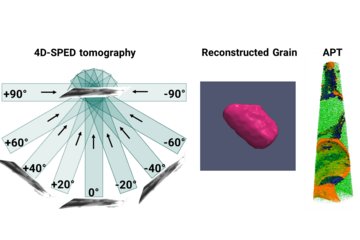All genres
21.
Talk
Enhancing mechanical properties of calcite by Mg substitutions: A quantum-mechanical study. Multiscale design modeling 2010, Brno, Czech Republic (2010)
22.
Talk
Ab initio based multiscale modeling of biological composites: Example of the exoskeleton of the lobster Homarus Americanus. Colloquium Lecture, Center for Nanoscience CeNS, Ludwigs-Maximilians Universität München, München, Germany (2010)
23.
Talk
Arthropod cuticle: A biological multi-functional composite used as template for nano-to-macro-scale hierarchical modeling. Multiscale Materials Modeling, Freiburg, Germany (2010)
24.
Talk
Ab initio based multi-scale approaches to the elasticity of polycrystals. ICAMS Scientific Retreat, Akademie Biggsee, Attendorn, Germany (2010)
25.
Talk
Ab initio based study of multi-scale elastic properties of hierarchical biocomposites. Seminar talk at Masaryk University, Brno, Czech Republic (2010)
26.
Talk
Arthropod Cuticle: A Biological Multifunctional Composite Used As Template for Multidisciplinary Nano-To-Macro-Scale Hierarchical Modeling. 139th Annual Meeting of the Minerals, Metals and Materials Society (TMS), Seattle, WA, USA (2010)
27.
Talk
Crustacean skeletal elements: Variations in the constructional morphology at different hierarchical levels. DFG Winter School Priotity Programme 1420: "Biomimetic Materials Research: Functionality by Hierarchical Structuring of Materials", Kerkrade, The Netherlands (2010)
28.
Talk
Ab initio study of calcite substituted by Mg and P. Seminar talk at Masaryk University, Brno, Czech Republic (2009)
29.
Talk
Ab initio study of calcite substituted by Mg and P. Multiscale design modeling 2009, Brno, Czech Republic (2009)
30.
Talk
Crustacean skeletal elements: Variations in the constructional morphology at different hierarchical levels. Seminar talk at Masaryk University, Brno, Czech Republic (2009)
31.
Poster
Enhancing mechanical properties of calcite by Mg substitutions - A quantum-mechanical Study. 75. Annual Meeting of the DPG, Dresden, Germany (2011)
32.
Poster
Ab initio study of thermodynamic, structural, and elastic properties of Mg-substituted crystalline calcite. 4. Wiener Biomaterialsymposium, Vienna, Austria (2010)
33.
Poster
Quantum-mechanics-based study of multi-scale elastic properties of hierarchical biocomposites. Prospects of bionics for functional Materials Science, Montan University Leoben, Leoben, Austria (2010)
34.
Poster
Enhancing mechanical properties of calcite by Mg substitutions: An ab initio study. Psi-k Conference 2010, Berlin, Germany (2010)
35.
Poster
Ab initio based study of multi-scale elastic properties of hierarchical biocomposites. Psi_k Conference 2010, Berlin, Germany (2010)
36.
Poster
Arthropod cuticle: A biological multi-functional composite used as template for nano-to-macro-scale hierarchical modeling. Materials Science and Engineering 2010, Darmstadt, Germany (2010)











